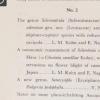
17-12-2025 18:35
 Michel Hairaud
Michel Hairaud
Bonjour à tous/Hi to everyone I am passing along

15-12-2025 15:48
 Danny Newman
Danny Newman
Melanospora cf. lagenaria on old, rotting, fallen

15-12-2025 15:54
 Johan Boonefaes
Johan Boonefaes
Unknown anamorph found on the ground in coastal sa

15-12-2025 21:11
 Hardware Tony
Hardware Tony
Small clavate hairs, negative croziers and IKI bb

15-12-2025 07:09
 Danny Newman
Danny Newman
indet. Rutstroemiaceae sp. on unk. fallen leavesMc

15-12-2025 07:05
 Danny Newman
Danny Newman
Pseudosclerococcum golindoi (det: Zotto)near Cosb

15-12-2025 11:49
 Danny Newman
Danny Newman
ITS sequences from the following two collections B

15-12-2025 12:34
 Danny Newman
Danny Newman
indet. Rhytismataceae on oak leafnear Purchase Roa
Q = (1,6) 1,9 - 2,3 (2,7) ; N = 41
Me = 10,9 × 5,2 µm ; Qe = 2,1
Q = (15,8) 16,0 - 18,6 (20,9) ; N = 9
Me = 112,5 × 6,4 µm ; Qe = 17,6

De mémoire, il me semble que Ciborinia camelliae possède certains des caractères décrits
Amitiés Michel

Thanks for you answer !
Will get back in the greenhouse , they were a lot .
And do what you suggested.
Sébastien

Je dispose d une documentation assez complète
Michel


here's Hara's article and an approximate translation (google + deepl combined, but there are still some errors left and I don't the language to correct them).
Viktorie



Hara K (1919): A sclerotial disease of camelia (Camellia japonica). Dainippon Sanrin Kaiho 436: 29-31.
I don't know the researcher's first name - translators translated it as "Setsuke" but all mentioned papers cite "K. Hara".
The journal's archive is here: http://sanrin.sanrinkai.or.jp/
Saracchi et al cite another Kohn & Nagasawa article from 1984 in a japanese journal I haven't found yet: Kohn, L.M.; Nagasawa, E. A Taxonomic Reassessment of Sclerotinia camelliae Synonym Ciborinia camelliae with Observations on Flower Blight of Camellia japonica in Japan. Nippon. Kingakukai Kaiho 1984, 25, 149–162.


Some spécimens have been sent for sequencing to the museum of Paris , but it Will take a little while , usually they do ITS and LSU (28S) , will keep you posted !


"Shizuokaken Noukaiho 256, 10-11", "Dainippon Sanrin Kaiho 436, 29-31", "Nouji Shinpo 13(5), 17-18", "Engei no Tomo 15, 385-388".
All in Japanese and almost identical in content.
"Dainippon Sanrin Kaiho" was published on March 15, 1919, but "Shizuokaken Noukaiho" was published earlier, on February 25.
This paper is not mentioned in Kohn and Nagasawa, IF, or MyCoBank, but I believe it is the earliest paper validly published.
This paper contains specimen data not found in the other papers.
The "Shizuokaken Noukaiho 256" archived at:
https://agriknowledge.affrc.go.jp/RN/2039006141.pdf
Kutsuna

Automatic translation seems difficult.
According to Hara's description, specimen collected on Apr. 21, 1918, ascospores are 8-11 × 4-5.
Kutsuna


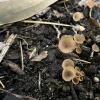
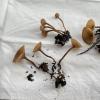
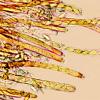
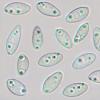
 On-the-sclerotinia-disease-of-camelia-Hara-1919--0001.pdf
On-the-sclerotinia-disease-of-camelia-Hara-1919--0001.pdf